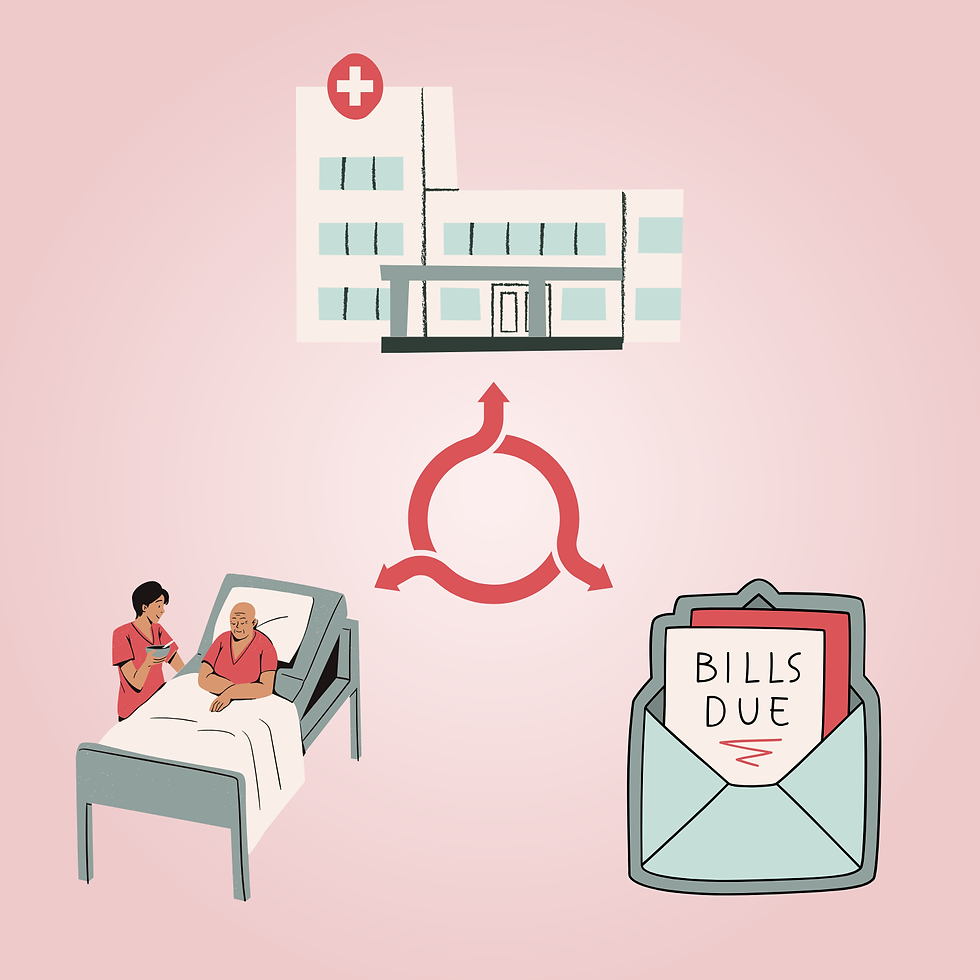Menstruation in Prisons: A Cruel Form of Punishment
- Anna Chen
- Apr 23, 2023
- 3 min read
Ironically known as the “Land of the Free,” the United States houses about twenty percent of the world’s incarcerated individuals, despite representing a mere 4.2% of the world’s population (1). Of those incarcerated, about 170,000 are housed in women’s jails (2). A majority of those housed in these jails are below the age of 55, meaning that every month, every time they menstruate, they are subjected to additional dehumanization, humiliation, and punishment.

Simple supplies, such as pads and tampons, are sparingly provided. While the allotted amount differs between jails, some have reported as little as “one pack of pads and five regular-sized tampons monthly” (3). For heavy bleeders, this supply simply isn’t enough, and to access more supplies, one must pay. In contrast to the average price of about eight dollars for a box of tampons at drugstores, some prisons charge a hefty fee of fifteen dollars. Without a steady source of income, this price can’t easily be paid. So what choice are they left with? They must stuff their underwear with toilet paper (which is also rationed) and hope they don’t bleed through.
However, this lack of access to supplies often isn’t an issue of stock but rather one of power. Testimonials have come out of various prisons, including Rose M. Singer Center, stating that the distribution of these supplies is left to individual officers. While some “report no issues”, others “have to beg for it” (4). In other words, these supplies were only given to those who had a good relationship with the officers. One prisoner even recalled witnessing an event where a correction officer threw a box of tampons into the air, watching inmates scramble to grab them.
This problem of supplies isn’t the only way menstruation is used as a form of punishment in prisons. TIME magazine collected testimonials from incarcerated individuals and compiled below:
“A guard can supply a woman with her allotment of pads, but deny her the underwear she needs in order to wear the pad in the first place.
Someone on their period may be given supplies, but denied trash cans to dispose of soiled items.
During strip-searches, women are corralled into one area where a guard will order anyone menstruating to remove their tampons. One woman described routinely stepping onto other women’s menstrual blood on the floor.
A menstrual blood stain on a prison uniform becomes a reason to be singled out, called “lazy” and shamed by guards.
There is no privacy behind bars. Even changing your pads or tampons is an occasion for guards to watch.”
In an attempt to reconcile this horrific treatment, lawmakers have introduced various bills surrounding the issue of menstrual care for the incarcerated. One such successful measure was the First Step Act, which codified that prisons must provide period products free of charge.
However, these changes are often made on the federal level and thus only affect federal-level prisons. This leaves about 90% of women incarcerated, those in state-level prisons, without the benefits of these legislations (5). Currently, over 35 states lack menstrual care protections (3).
The treatment of menstruation in jails is, simply put, a horrific and cruel abuse of power. No matter your beliefs on incarceration, no one should be subjected to this level of dehumanization and humiliation. Menstruation is intrinsically related to human dignity. When people can’t access safe and effective care, we are violating their human rights. We are making these women hate their bodies. Thus, it’s vital that there is more awareness surrounding the issue of menstruation care. Only with an outroar of voices will lawkmakes be propelled to make the necessary changes to improve the situation of the incarcerated and to treat them as humans.
Edited by: Sam Shi
Graphic Designed by: Harris Upchurch
References



Comments